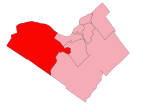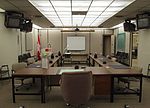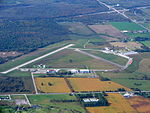West Carleton-March Ward

West Carleton-March Ward (Ward 5) is a city ward in Ottawa, Ontario, Canada. The ward was created for the 2000 election when West Carleton Township was amalgamated into the new city of Ottawa. At that time, the ward was called West Carleton Ward. It consisted of the former West Carleton Township. In 2006, the boundaries were altered, and the ward was given its present name. Its southern border became Highway 7 and the Queensway and it lost some areas in the southeastern part of the ward. The ward also added the rural northern portion of the former city of Kanata. Its population in 2006 was 23,400 – the second least populated ward. Its area is 763 km², the largest city ward. It was represented by Eli El-Chantiry on Ottawa City Council from 2003 until 2022 when he retired. Clarke Kelly won the 2022 election to represent the ward. Following the 2020 Ottawa Ward boundary review, the ward lost small sections of territory in the South March area and north of Stittsville to accommodate proposed housing developments.
Excerpt from the Wikipedia article West Carleton-March Ward (License: CC BY-SA 3.0, Authors, Images).West Carleton-March Ward
Thomas A. Dolan Parkway, Ottawa West Carleton-March (West Carleton)
Geographical coordinates (GPS) Address Nearby Places Show on map
Geographical coordinates (GPS)
| Latitude | Longitude |
|---|---|
| N 45.366666666667 ° | E -76.1 ° |
Address
Thomas A. Dolan Parkway
Thomas A. Dolan Parkway
Ottawa, West Carleton-March (West Carleton)
Ontario, Canada
Open on Google Maps






